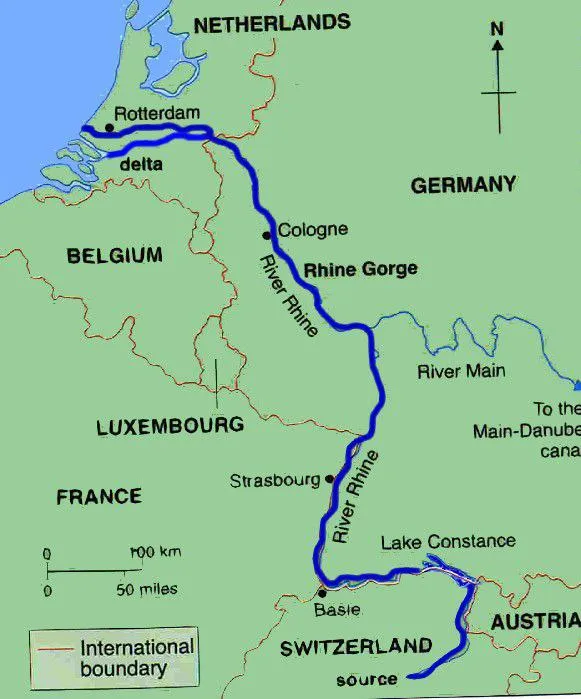Think of a small patch of Europe, tinier than Rhode Island, but with a huge vibe. That’s Luxembourg. Most people couldn’t find it on a map if you spotted them the first letter, yet it’s got a name that sticks for its money, castles, and wild history. I’ve been looking into this place, and it’s nuts how much it crams into such a little spot. This article’s gonna pin down where it is, why folks talk about it, and some cool stuff you won’t catch in every guide. Let’s roll.

Quick Look: What’s Cool About Luxembourg
- Where It’s At: Right in the middle of Western Europe, tucked between Belgium, France, and Germany.
- Size: Only 2,586 square kilometers, but it’s packed with stories.
- Big Deals: Richest country per person, a cash hub, a UNESCO Old Town, and it’s a grand duchy.
- Feel: Old castles next to new skyscrapers, with a mix of languages, Luxembourgish, French, and German.
- Hidden Wins: Free buses and trains for everyone, plus castles and tunnels to check out.
Where Is Luxembourg, Anyway?
Luxembourg’s a small landlocked chunk in northwest Europe. It’s squished between Belgium to the north and west, France to the south, and Germany to the east. If you’re eyeing a map, it’s around 49.7562° N, 6.0970° E, about a three-hour drive from Brussels or Cologne, sitting handy near Paris and Frankfurt. The whole place is just 1,607 square miles, like a big county back home, but its spot has always made it a busy crossing point.
The capital, Luxembourg City, sits in the south-central area, built on a rocky plateau where the Alzette and Pétrusse rivers dig deep valleys. People call it the “Gibraltar of the North” because of its high cliffs, where Count Siegfried threw up a castle called Lucilinburhuc (“Little Fortress”) back in 963—that’s where the name kicked off. The land’s got two sides: the Oesling up north with its rough Ardennes hills, and the Gutland down south with flat fields and the Moselle River valley, dubbed the “Little Riviera” for its sunny vineyards.
A History That’s Pretty Wild
This place goes way back. Folks were living there 35,000 years ago, leaving stone tools from the old days. By 6th century BC, Celtic tribes called the Treveri were hanging out between the Rhine and Meuse rivers. Then the Romans rolled in around 58 BC, ruling it for 450 years and leaving ruins you can still see at Titelberg. When they pulled out in AD 406, the Germanic Franks took over, and their lingo turned into today’s Luxembourgish.
Jump to the Middle Ages, and Luxembourg got busy. In 1354, it became a duchy under the Holy Roman Empire, with Wenceslaus I as the first duke. The House of Luxembourg pumped out emperors like Charles IV, who set up the Golden Bull in 1356 to sort out the Empire. Everyone wanted it, Spain, Austria, France, you name it, thanks to its prime spot. The fortress was a beast, almost as tough as Gibraltar, but they tore it down in 1867 when Luxembourg said it’d stay neutral.
World Wars I and II hit hard, with Germany ignoring that neutrality and taking over. That pushed Luxembourg to join NATO, the EU (a founder in 1957), and Benelux. Now it’s a monarchy with Grand Duke Henri since 2000, though the prime minister, Luc Frieden since 2023, runs the show.
What Makes Luxembourg a Big Deal?
This little spot’s got some serious reasons it’s famous. Here’s the scoop.
- Rolling in Dough
Luxembourg is the richest place per person worldwide, with a GDP per capita of around €89,800, way more than the EU’s €37,600. It started with steel, but now it’s all about banking and finance, making up 36% of its economy. The Kirchberg area in the capital is full of sleek towers with the European Investment Bank and the Court of Justice. It got heat as a tax haven back in 2009, but it’s cleaned up since. Almost 90% of its companies are foreign, drawn by low taxes. - A Culture Mash
With 655,000 people, half are from somewhere else, Portuguese, French, Italians, you get it. Everyone speaks Luxembourgish (a German-French mix), plus French and German, and most pick up English. Food’s a blend too: French croissants, German sausages, and local Judd mat Gaardebounen (pork with beans). The Schueberfouer funfair and Echternach’s dancing procession (a UNESCO thing) show off this mix. - Old Town and Tunnels
Luxembourg City’s Old Town is a UNESCO standout. The Bock Casemates, 21 kilometers of tunnels carved into cliffs since the 1600s, were for defense and later shelters in World War II. You can walk 7 miles of them today, peeking out over the city. The Chemin de la Corniche walkway gives you a sweet view of the Grund area’s old streets, and spots like Notre-Dame Cathedral (1613) and the Grand Ducal Palace add history. - EU Heavyweight
Luxembourg City’s one of the EU’s main spots, with Brussels and Strasbourg. It’s home to the Court of Justice, European Court of Auditors, and some Parliament meetings. It helped kick off the EU in 1957 and hosted the Schengen Agreement in 1985, which opened borders across Europe. - Castles and Nature
Over 100 castles dot the land, especially in the Éislek region. Vianden Castle’s medieval towers are a must, with Clervaux and Bourscheid nearby. The Mullerthal, called “Little Switzerland,” has rocky trails and a 112km hiking path. The Moselle valley’s vineyards make white wines and crémant, while Mondorf-les-Bains has hot springs for a lazy day.
Cool Stuff You Might Not Know
Here’s some unique bits I’ve picked up:
- Free Rides: Since 2020, Luxembourg has had free buses, trains, and trams for everyone, first country to do it.
- Hidden Tunnels: The Pétrusse Casemates under the city are less known but creepy and fun to explore.
- Mermaid Story: Locals talk about Melusina, a mermaid who married Count Siegfried but vanished into the Alzette River when he broke a vow; some still see her in the mist.
- Fairy Park: Parc Merveilleux in Bettembourg has animals, mini-trains, and fairy-tale vibes for kids or oddball lovers.
- Super Safe: With just two jails, crime’s so low it’s almost dull, great for travelers.
Why Check Out Luxembourg?
This place is a surprise. It’s got history like a movie, money that blows your mind, and views that stop you cold. Walk the casemates, sip Moselle wine, or hike Mullerthal, Luxembourg feels like a secret you lucked into. It’s shaped by Romans, Franks, and bankers, all leaving their mark. Check Visit Luxembourg’s site or grab a map at the city tourist office to plan.

